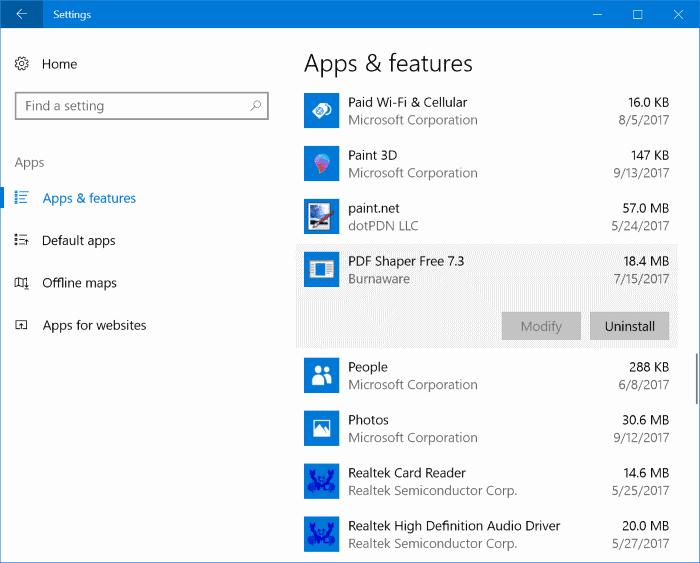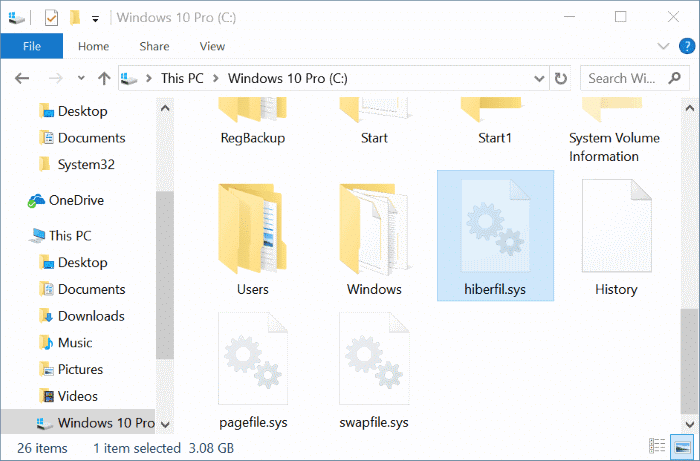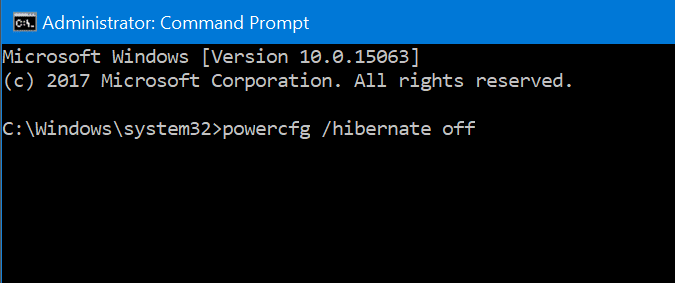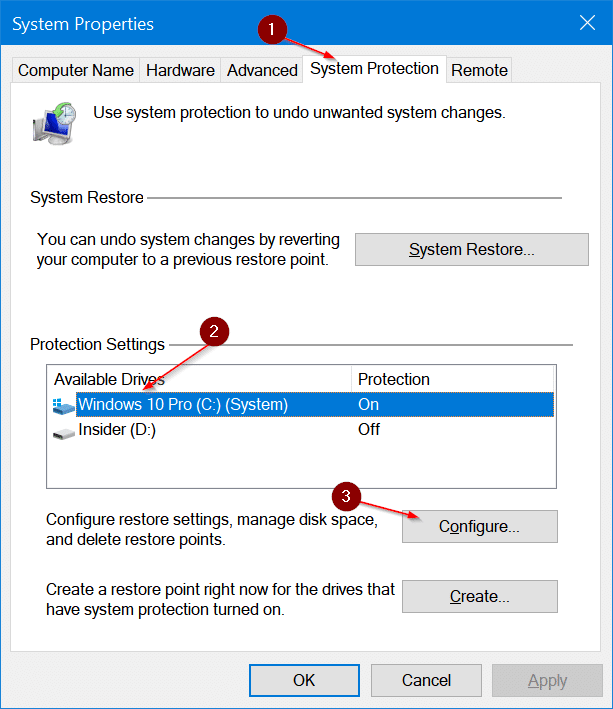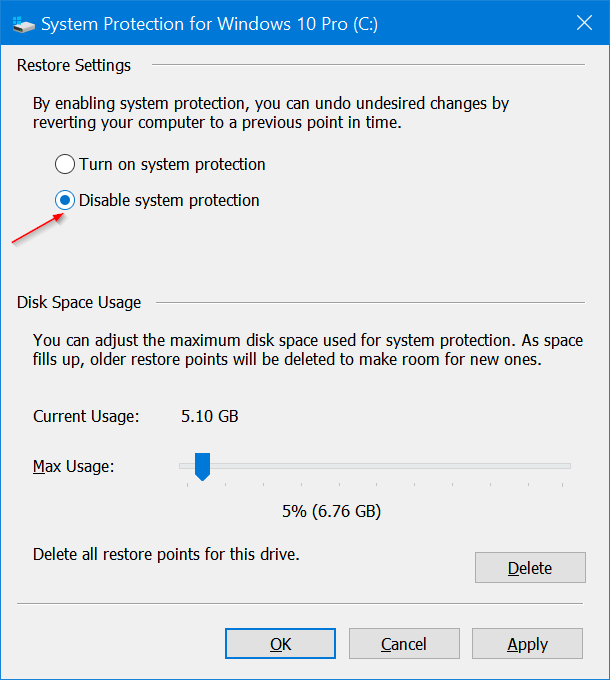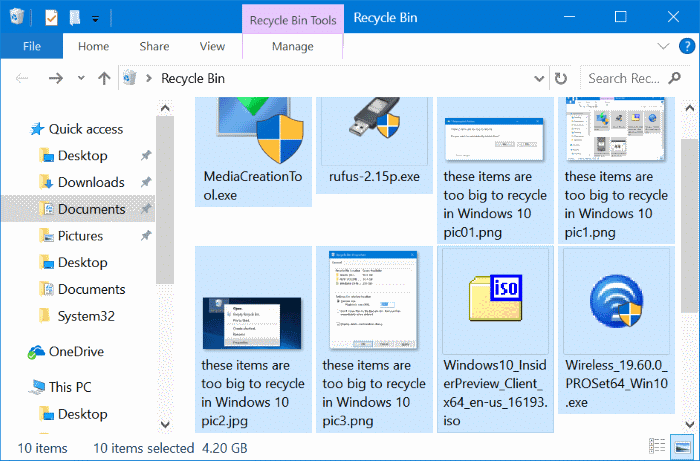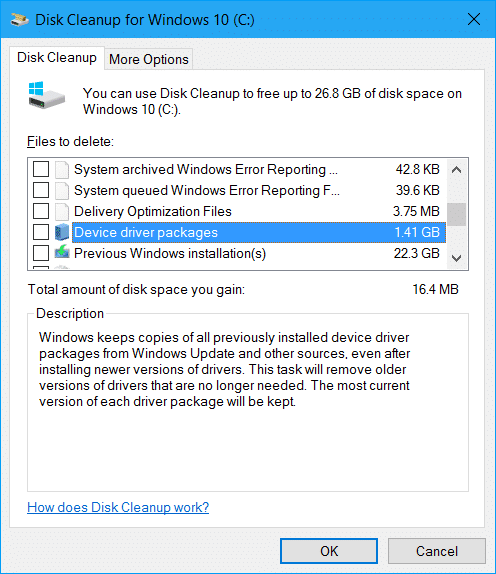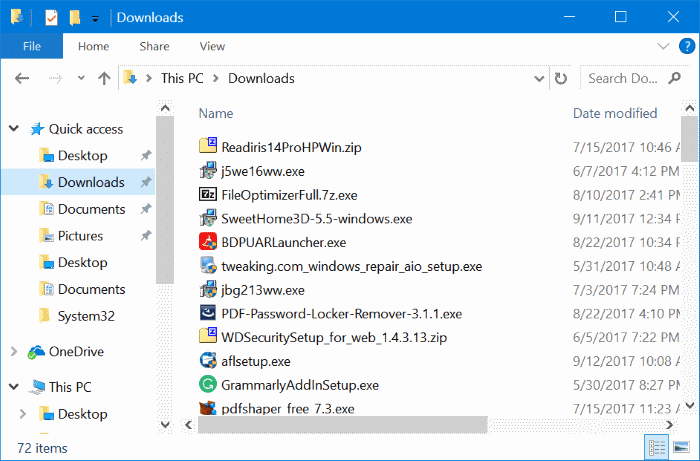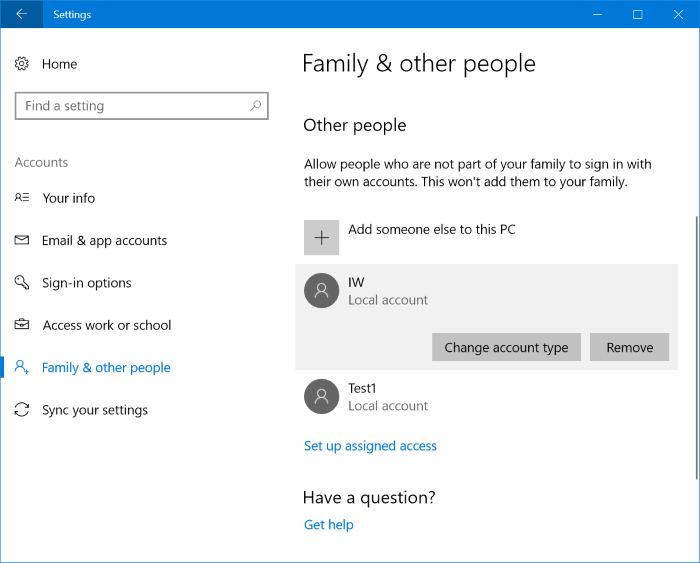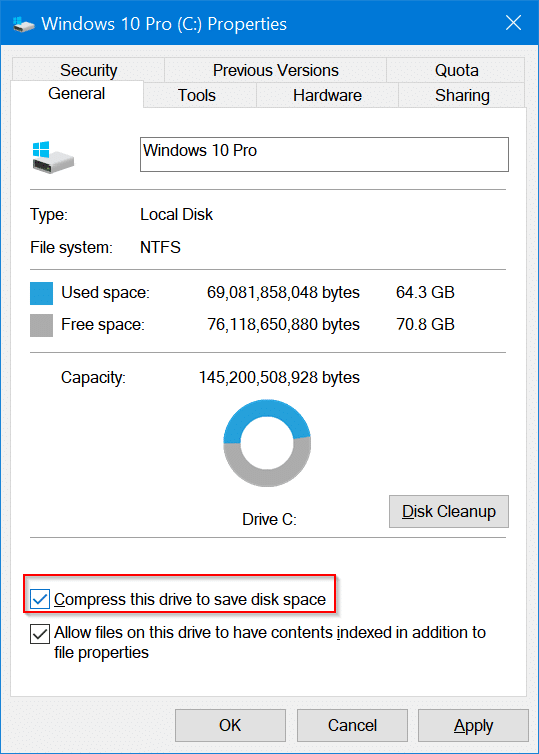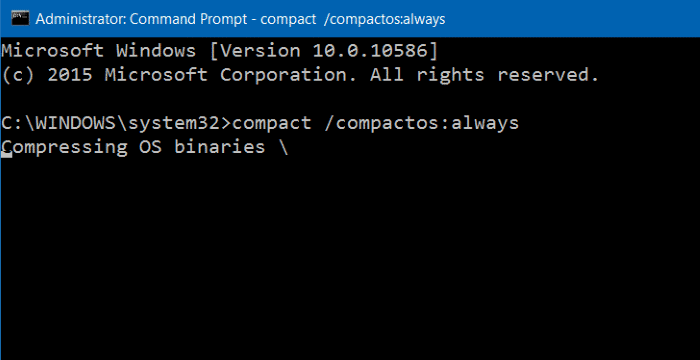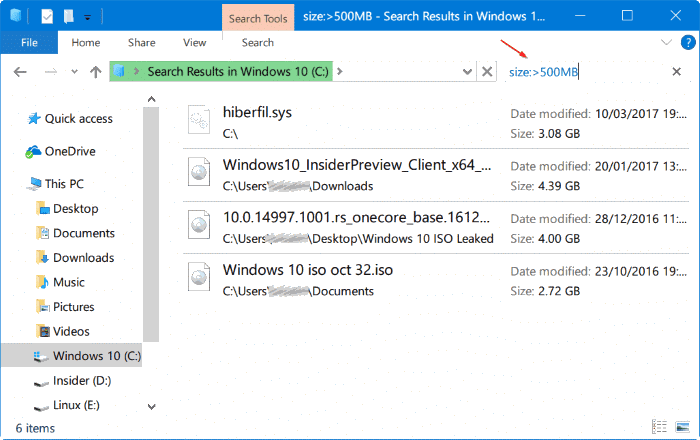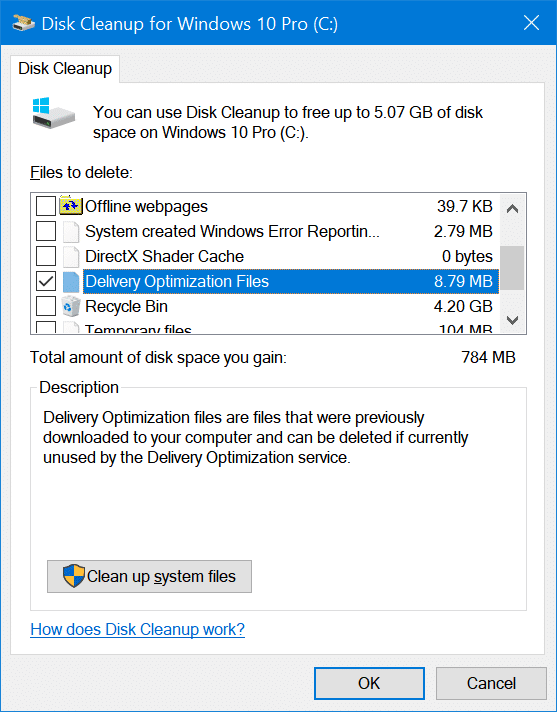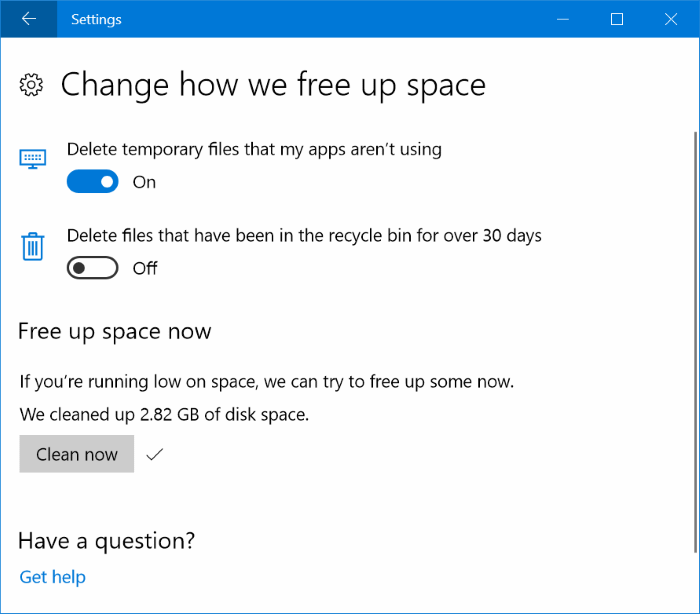- 1【阿里淘天笔试题汇总】2024-04-03-阿里淘天春招笔试题(第一套)-三语言题解(CPP/Python/Java)
- 2Oracle exists 和 in 区别_exists和in的区别
- 3【java】反射
- 4Mac上Maven的安装和环境变量配置保姆级教程(最新版实时更新)
- 5watermark java_GitHub - k-ff/BlindWatermark: Java 盲水印
- 6字节跳动面试流程以及注意事项,各大厂具有通点,软测工程师面试时要注意了_测试工程师需要刷题吗
- 7使用Python进行数据分析——线性回归分析_进行样本数据集的线性回归模型分析代码python
- 8大模型模型结构总结
- 9SQL与NoSQL的区别 以MySQL与MongoDB为例_mysql、nosql mongodb
- 10软考132-上午题-【软件工程】-沟通路径
win10释放C盘空间的19中方法_hibernation file
赞
踩
原文地址:https://www.intowindows.com/16-ways-to-free-up-drive-space-in-windows-10/
19 Ways To Free Up Drive Space In Windows 10
Is your hard disk drive or solid state drive filling up fast? Want to free up disk space on your Windows 10 PC? In this guide, we will discuss all the ways out there to free up drive space in Windows 10.
You can free up GBs of disk space on your PC with a little bit of work. In this article, we will list out all the possible ways out there to free up space on your Windows 10 PC.
In no particular order, following are the 19 ways to free up drive space in Windows 10.
Uninstall unwanted apps and programs
You are aware of this, and probably have done this already. If not, uninstall unwanted programs and apps right away to free up disk space. Some of the programs out there consume GBs of valuable disk space.
By navigating to Settings app > Apps > Apps & features you can view disk space being used by apps and programs. You can also uninstall apps and programs right from this page.
You can also consider uninstalling not so useful native apps to free up drive space in Windows 10. Refer to our how to uninstall default apps in Windows 10 guide for instructions.
Turn off hibernation to free up drive space
Before you start complaining, let us make it clear that we suggest to turn off the hibernation feature only if you are not using it or don’t know what the hibernation feature is.
Hibernation feature, when turned on, creates hyberfil.sys file which takes about the size of the RAM installed on your PC. For instance, if your PC is equipped with 8 GB of RAM, the hibernation feature takes about 7 GB of disk space.
Remember that hibernation feature is turned on by default in Windows 10 but it’s not added to the Start menu by default. So, make sure that it’s turned off if you don’t use it. And if you don’t want to turn it off, consider reducing the size of the hibernation file.
Here is how to disable the hibernation feature
Step 1: Open Command Prompt as administrator by typing CMD in the Start/taskbar search field, right-click on Command Prompt entry and then click Run as administrator.
Step 2: In the elevated Command Prompt, type powercfg /hibernate off and then press Enter key to turn off the hibernation feature and free up space.
Disable or delete system restore points
System restore points come in handy when you want to restore your Windows 10 PC to an earlier date to fix issue(s). Depending on the number of restore points and allocated space for the system restore point feature, it might be taking GBs of disk space. Again, turning off system restore feature is not recommended, especially if you know how to use it!
Alternatively, you can delete all restore points except the most recent one if you don’t want to turn off the feature. There are also ways out there to delete individual restore points.
Here is how to turn off system restore feature.
Step 1: In the Start/taskbar search field, type sysdm.cpl and then press Enter key.
Step 2: Switch to the System Protection tab. In the Protection Settings section, select a drive and then click the Configure button.
Step 3: In the resulting dialog, select Disable system protection radio button, and then click Apply button.
Repeat step 2 and 3 for other drives to completely turn off system restore feature for all drives and free up drive space in Windows 10.
Clear the Recycle Bin
You probably know that when you delete a file in Windows 10 by selecting a file and then pressing the Delete key, the file is moved to the Recycle Bin. As long as a file is in the Recycle Bin, it continues to take the disk space. You can reclaim valuable disk space by allocating less disk space to the Recycle Bin and clearing all files from the Recycle Bin.
If you often find yourself doing Shift + Del to permanently delete files without moving files to the Recycle Bin, you should consider turning off the Recycle Bin. We recommend you configure Windows 10 to automatically delete old files from Recycle Bin.
Delete old versions of drivers
Just like older versions of software, old drivers of no use and take up disk space. Luckily, Windows 10 allows you to delete old device drivers with ease. Please refer to our how to delete old device drivers in Windows 10 guide for step-by-step directions.
Delete Windows.old folder
If you upgraded to Windows 10 from Windows 7/8.1 or upgraded to the latest version of Windows 10 recently, you likely have a folder called Windows.old at the root of your system drive.
The Windows.old folder contains data from your previous Windows installation(s) and takes no less than 10 GB of drive space. If you are sure that you don’t need data from previous Windows installation(s), you should delete the Windows.old folder to free up considerable amount of disk space.
Follow the instructions in our how to delete Windows.old folder in Windows 10 guide or how to automatically delete previous Windows installation files article for instructions.
Delete $Windows.~BT & $Windows.~WS folders
The $Windows.~BT & $Windows.~WS folders can be found at the root of the system drive. These folders are generated while upgrading to Windows 10 or latest version of Windows 10. You can delete them to free up GBs of space. Follow the directions in our how to delete $Windows.~BT & $Windows.~WS folders in Windows 10 for instructions.
Delete files from Downloads folder
With default settings, files downloaded using all web browsers are saved in the Downloads folder located on the drive where Windows 10 is installed. You might be having tens of unwanted files in the Downloads folder consuming hundreds of MBs of space. For instance, the setup file of a program is not required post the installation of the program unless you reinstall the program very often!
Delete temporary files
Deleting temporary files is an easy job. Refer to our how to safely delete temporary files in Windows 10 guide for step-by-step details.
Clear the update cache
You might be able to gain some good amount of disk space by clearing the Windows Update cache. The Update cache is the place where all update files that are being downloaded and also corrupt updates are temporarily saved.
Follow the instructions in our how to clear Windows update cache in Windows 10 article for directions.
Delete unused user accounts
A new user account usually takes up very little drive space. Depending on the number files and size, a user account might be consuming few MBs to GBs of disk space.
In short, if you have an unused user account on your PC, you can delete it although you might gain very little space by doing so. You can always create a new account when you need it. To delete an account, navigate to Settings app > Accounts > Family & other people. Select an account and click Remove button.
Compress drives to free up drive space in Windows 10
Compressing drives is probably is not a good idea, especially if you don’t want to compromise on overall performance. That said, if you are experiencing acute shortage of space, you can do so to free up some space.
Refer to the directions in method 2 of how to compress drives to free up disk space guide to compress drives in Windows 10.
Compress Windows 10 installation
Compact OS is a new feature in Windows 10 that helps you to reduce the disk space used by the Windows 10 installation. Refer to our how to compress Windows 10 installation to save disk space guide for directions to gain disk space by using the compact OS feature.
Find out large files and delete if not required
Finding out large files is quite easy. Refer to our how to find large files in Windows 10 for step-by-step directions. Delete large files as well as small files that you no longer need. Use free software like Space Snipper to find out large files on your PC easily.
Delete delivery optimization files
Delivery optimization files are files that were previously downloaded onto your PC. You can delete these files to free up drive space in Windows 10. To delete delivery optimization files:
Step 1: Open This PC. Right-click on the drive where Windows 10 is installed and then click Properties.
Step 2: Click Disk Cleanup button.
Step 3: When you see results, select the Delivery optimization files check box and then click OK button to delete delivery optimization files.
Delete temporary files used by apps
Temporary files that apps are not using can also be deleted GBs of disk space. Here is how to do that.
Step 1: Open Settings app. Navigate to System > Storage.
Step 2: Click Change how we free up space link.
Step 3: Select Delete temporary files that my apps are not using option.
Make sure that other options are not selected and then click Clean now button. In a few seconds, you will see how much space you recovered by deleting temporary files used by apps. As you can see in the picture above, we gained about 2.3 GB of disk space.
Delete duplicate files and folders
Finding duplicate files on your PC is not an easy job, but there are programs that can help you find and delete duplicate files and folders. We suggest dupeGuru program to find and delete duplicate files.
Last but not the least, you can consider moving photos and videos to an external drive or cloud service to free up drive space in Windows 10.
Move installed apps and programs to other drives
Some apps and programs take up GBs of space on the drive where they are installed. If the system drive is filling up fast, you can consider moving installed apps and games to a non-system drive to free up space. Refer to our how to change download location of installed apps and how to move installed programs in Windows 10 guides for directions.
Disable the Reserved Storage
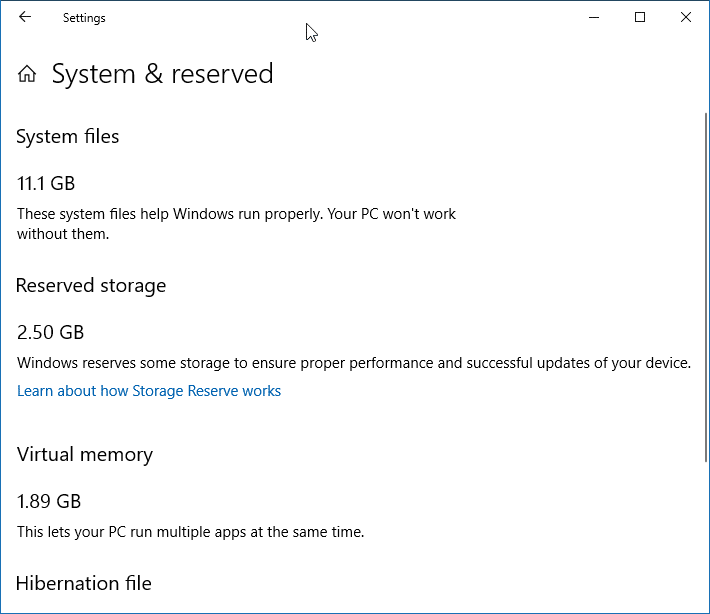
The Reserved Storage in Windows 10 is about 7 GB of disk space set aside by Windows 10 to be used by apps, Windows Update, temporary files and system caches. Although we don’t recommend disabling the Reserved Storage, you can turn off temporarirly to gain some disk space. Refer to the directions in our how to enable or disable the Reserved Storage in Windows 10 guide for directions.
Change iTunes backup location
This is strictly for iPhone and iPad users who backup their iPhone data to Windows 10 PCs. By default, iTunes uses the system drive to save your iPhone/iPad data. By setting a different drive as default iTunes backup location, you can free up tens of GBs of space.
Refer to our how change iTunes backup location in Windows 10 guide for step-by-step directions.

